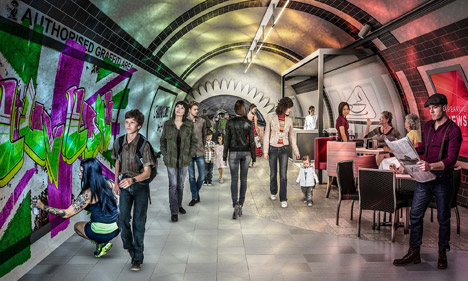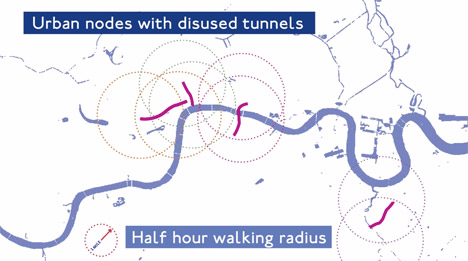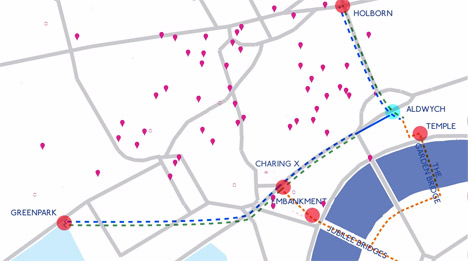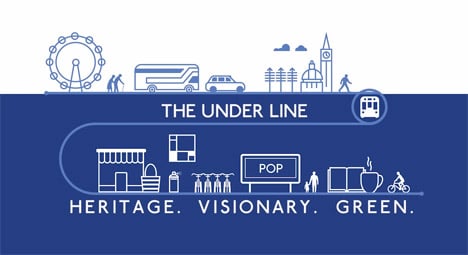London's derelict tube tunnels reimagined as a pedestrian and cycle network
News: architecture firm Gensler wants to repurpose London's abandoned tube tunnels to create a subterranean network of pathways that generate electricity as people walk and cycle through them.
The proposal – named the London Underline, in a kind of mash-up between the London Underground rail network and New York's popular High Line park – suggests that the city's disused tunnels could provide the answer to overcrowding on other transport routes.

London's underground network includes a number of old stations and tunnels that have been retired from service and now sit empty. These neglected spaces could offer cycleways that are safer and less crowded than the roads, but could also host to pop-up shops, cafes and cultural offerings for pedestrians, says Gensler.
"Now that London has reached the highest level of population in its history, we need to think creatively about how to maximise the potential of our infrastructure," explained Ian Mulcahey, co-director of Gensler London. "The adaptation of surplus and underutilised tube and rail tunnels could provide a quick and simple addition to our infrastructure network."
The firm proposes using a system called Pavegen instead of conventional paving slabs to line the tunnels. These engineered surfaces convert energy from footsteps into electrical power.
More of these slabs could also be integrated into the ground at a well-used train or tube station – the firm suggests Charing Cross or Holborn – to ensure the network produces more energy than it uses.

"Gensler's proposal brings back an ignored part of the city through the collective efforts of its citizens," said designer Trevor To. "By harnessing the kinetic energy of everyone's footsteps, a whole new urban space is unlocked underneath the city."
"This self-sustaining approach to urban infrastructure is key to a carbon-neutral community, and London could lead the world once again in merging tradition with innovation to create a better future," he added.

The first tunnels under consideration are a series of underground spaces in central London, between the existing stations at Green Park and Holborn, as well as the now-defunct Aldwych, which would act as access points.
To link disconnected sections, old reservoir chambers and exchanges would also be surveyed for reuse – part of what the firm describes as "an untapped surplus of disused space in subterranean infrastructure".

Gensler isn't the first firm to propose an alternative to cycling on London's roads, which hit the headlines at the end of 2013 when six cyclists were killed in a two-week period.
London mayor Boris Johnson recently approved plans to create Europe's longest segregated cycle lane through the city centre, while a team including London firm Foster + Partners previously unveiled a concept to build a network of elevated pathways above London's railways.